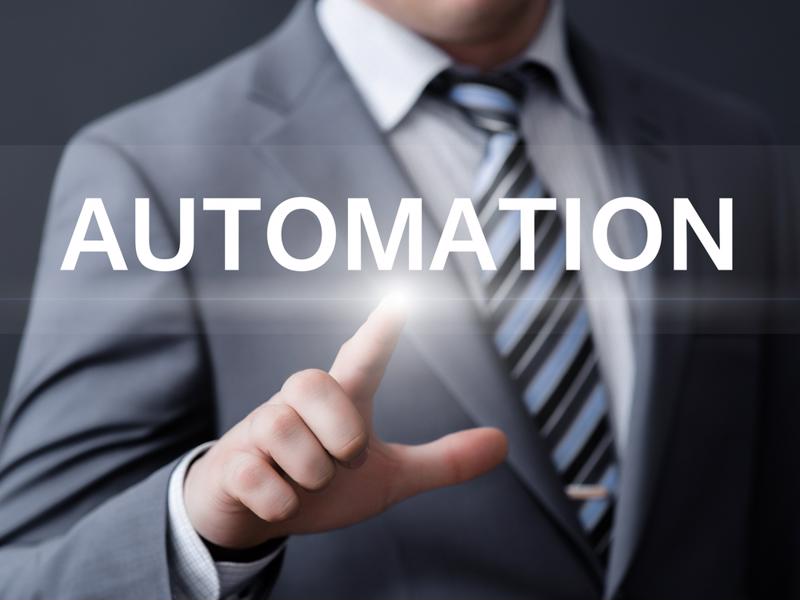
Implementing automation for better retail processes
By Max BurkhalterFebruary 22, 2021
Automating retail processes can reduce overhead, minimize touch, cut down on human error and speed up back office functions to keep floor activity rolling with better employee attention and focus. Being able to shift toward digitization depends on your company's ability to achieve complete buy-in at all levels, from the boardroom to the sales floor.
Once a commitment to automation is made, a robust network will be required to track, analyze and generate insights that will prove the efficacy of these new processes. McKinsey notes that current technology could be leveraged to automate roughly half of tasks in normal retail operations.
What can retail automation do for your brand? The technology can better your processes, improve data collection and analysis, increase efficiency and provide cost savings across your organization. Automation can significantly limit errors caused by manual data entry by regulating these activities as set by strict protocols. This frees staff to instead focus on customer service and sales, improving your bottom line and satisfying your stakeholders.
Inventory management
When stock is present across different stores and warehouses, traveling through multiple supply chains and being purchased across varying channels, effective inventory management becomes a critical component to profitability. These processes may feel tedious, but when completed incorrectly or inaccurately, mishandling can negatively impact your business. By investing in a quality inventory management system, you can make better purchasing decisions, avoid stockouts and reduce inventory storage costs.

Technology can have a significant impact on inventory management. You can automate retail stores and increase profitability by implementing one or more of the following solutions:
- Inventory counts using a retail point-of-sale software to track counts for individual retailers
- Notifications for low stock alerts that could damage customer experience
- Automated transaction processes, including purchase order generation and submission to vendors or suppliers
- Robotic assistance to fulfillment orders, lowering labor costs and providing greater customer satisfaction
- Warehouse management to optimize storage space and enable automated case-picking
- Improved corrective actions for loss prevention, incident management and assignment of responsibility
Auditing and inspections
Manual and paper processes for inspections at individual stores and retail audits at the local, district and regional level can result in errors and oversights leading to hefty fines and even closures. Any associated negative press can also cause disruption, resulting in distancing by suppliers as well as a loss of trust among consumers.
Automation can be used to streamline audit and inspection processes by implementing smart store checklists, collaborative calendars, ticket tracking, task management and even photo verification for the end-to-end management of execution and communication processes at every store or franchise.
Store inspections can also be segmented into a review of operations, health and safety, inventory, compliance with governmental regulations and so on. Building a retail audit checklist can be a one-time process that is then duplicated across locations and augmented with AI and machine learning to detect anomalies and further refine processes.
Marketing
Digital marketing for retail brands can encompass multiple channels. Organizations can create automated email campaigns that are triggered by different consumer actions. Sales flows may include order confirmation, email receipts and new customer welcomes. Continued messaging may include milestone emails, special VIP offers and seasonal offerings.
Technology can also help to manage a company's social media presence, with alerts sent automatically to a live human in case an important message or complaint is detected. You may opt to get notifications for brand mentions, or send automated responses to common queries. Chat bots may be implemented to facilitate lead generation when linked to advertising posts.
The content creation process can be completely automated for scalable marketing. Continual content creation, distribution, publication and promotion can be set in motion and automated for a seamless flow of information. Text-based marketing can also be implemented to generate messages for customers and to utilize geographic targeting to send real-time product recommendations, event invitations, store promotions and digital coupons.
Personalized targeting is possible due to the proliferation of readily available data, oftentimes provided by consumers themselves in exchange for special offers or information. This allows for direct outreach using machine learning and artificial intelligence to predict consumer needs and behaviors, providing an optimized user experiences. Forrester points out that consumer behavior has undergone a massive shift, and automation can help retailers accommodate new shopping habits.
Analysis and reporting
Strong data empowers retailers to stay abreast of everything in the sales processes, including inventory, auditing, marketing and post-sales support. Data management can be automated to save time and manpower, shifting from manual analysis to automation that delivers deeper, more impactful insights that can used to leverage innovation. The accuracy of information derived from large data sets using these methods helps to micro-segment audiences and can be used to develop highly personalized campaigns for increased ROI and an improved user experience.
You'll need device networking technology capable of keeping pace with your data-driven initiatives. Contact Perle to learn more about Point of Sale support for the retail industry today.



